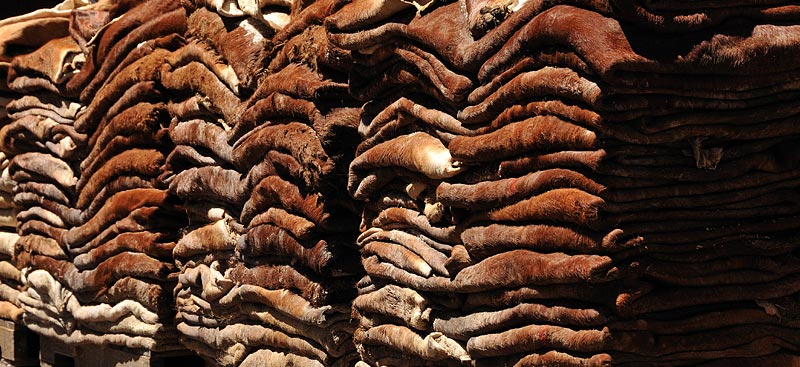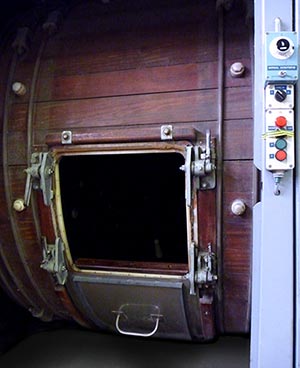Leather is tanned animal skin or hide, which has been rendered rotproof and is the end-product of the operations carried out by tanneries.
From animal hide to leather
Composition of animal hides and skins
The skin comprises three layers:
- the epidermis, which is in contact with the outside world and suffers stresses and strains;
- the dermis, which is the layer of living cells, organised into tight connective tissue. This is where the hairs are rooted, and the nerve-endings are located;
- the subcutaneous tissue, a layer of fatty cells and loose connective tissue, which is in direct contact with the muscles.
Preservation of hides and skins
Fresh or “green” hides and skins are cured to preserve them. Curing removes any water from tissues and thereby slows down the process of putrefaction, as any micro-organisms present develop. Coarse-grained rock salt (with particles 2 to 3 mm in diameter) is used, and antiseptic agents may also be added. During the curing process, hides and skins may lose up to 10% of their weight in water. They are stacked to allow the brine to drain away, inside premises with a relative humidity of between 70% and 90%. The temperature inside these premises is kept at around 10°C to optimise preservation.

© Tannerie Arnal
After two weeks, the hides and skins are examined one by one, and sorted according to their thickness, the number of flaying defects, the presence of scars, or their weight and surface area.
Beamhouse operations
Once the skin reaches the tannery, it undergoes a succession of five “beamhouse operations”:
- soaking: the skin is rehydrated and cleaned to remove any impurities and grime.
- unhairing and liming: this operation chemically removes animal hairs.
- fleshing: at this stage, the subcutaneous tissue is mechanically removed.
- bating: this process is used to start softening the leather.
- pickling: at this stage, the skin is acidified to prepare it to undergo the tanning process.
Tanning
 Tanning is the operation whereby skin and hide are converted into leather, using tannins. These consist of substances of various kinds (vegetable, mineral such as chromium III salts, combination tanning) that convert the skin from a putrescible substance into a rotproof material, which is resistant to hot water and has a low water content.
Tanning is the operation whereby skin and hide are converted into leather, using tannins. These consist of substances of various kinds (vegetable, mineral such as chromium III salts, combination tanning) that convert the skin from a putrescible substance into a rotproof material, which is resistant to hot water and has a low water content.
Dressing
The leather obtained then undergoes the chemical and mechanical treatments required to produce its characteristic properties. Chemical processing will endow it with its colour, suppleness, fullness, etc., while mechanical processing will include shaving (to produce the desired thickness), sammying (to remove any water still present) and setting-out (to stretch the leather and correct any folding-related defects). Lastly the leather is dried.
Finishing
At this stage, the leather takes on specific properties, notably in terms of its texture and appearance. These properties enable the leathers produced to be standardised. Depending on the end-uses involved, the following finishes are distinguished:
- Aniline finish: this enhances the surface of the leather by covering it with a transparent substance. This type of leather has a fine appearance, but its upkeep requires a great deal of attention.
- Semi-aniline finish: The leather is covered with a slightly opaque layer of pigment and another layer of translucent material, which masks minor defects.
- Pigment finish: The leather is covered with a layer of opaque pigments only. It offers easycare properties and is not sensitive to water.
